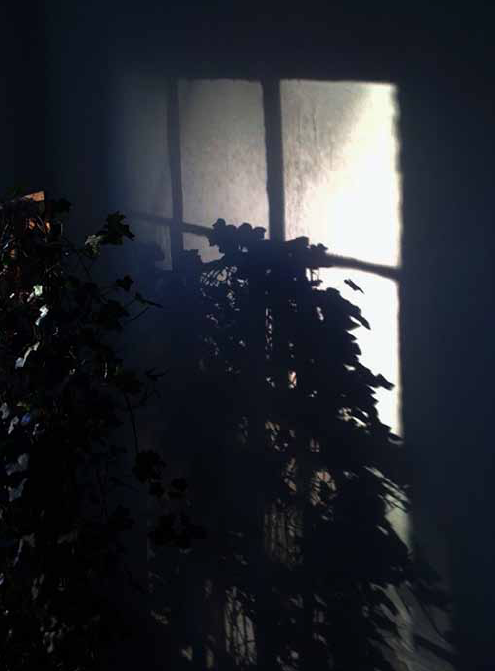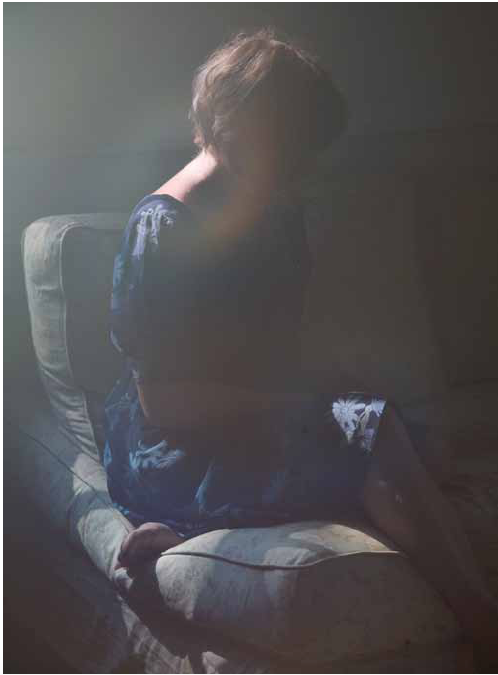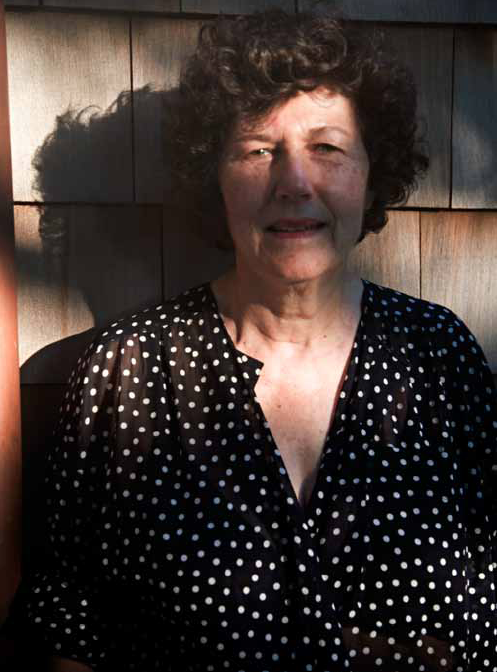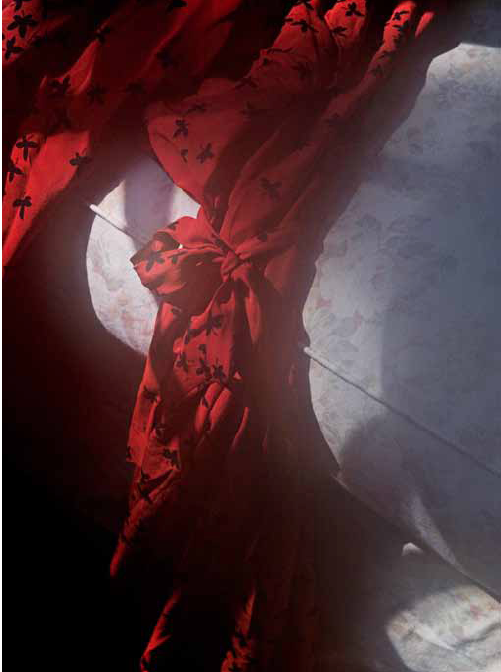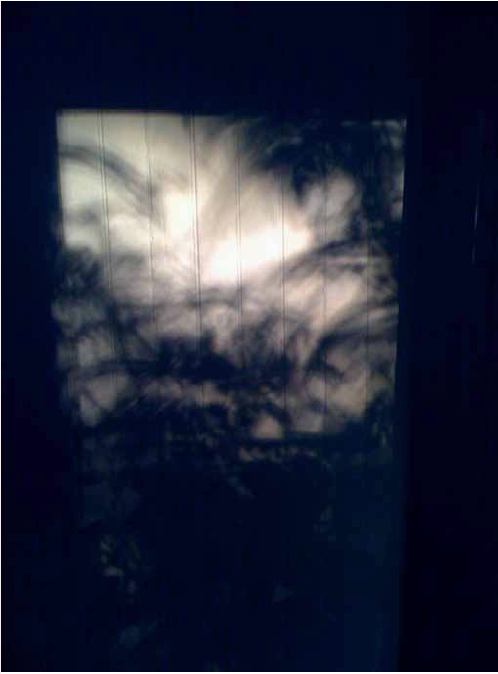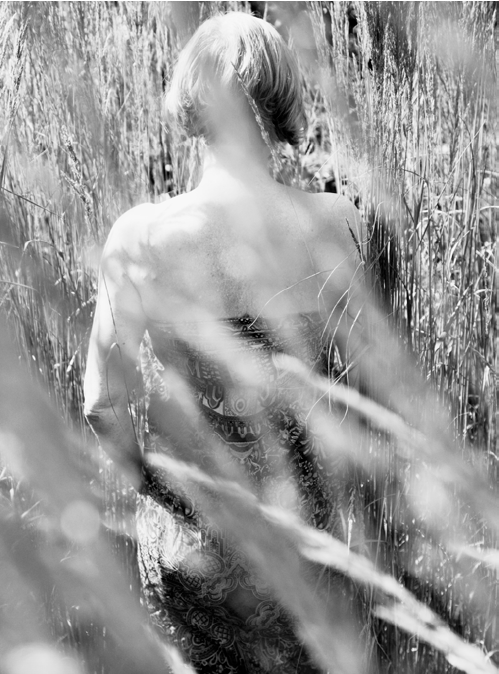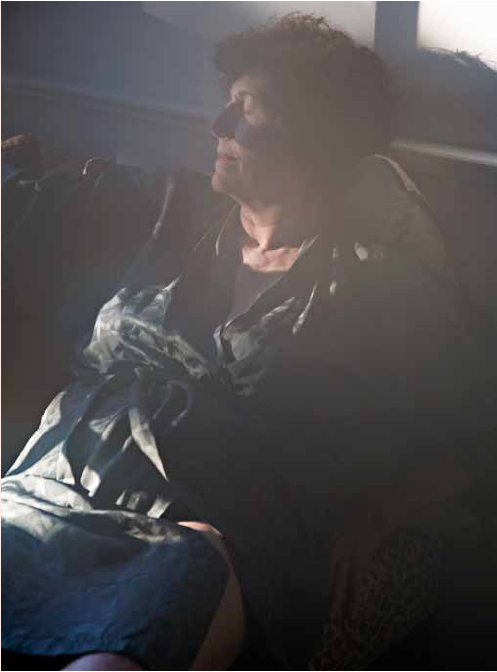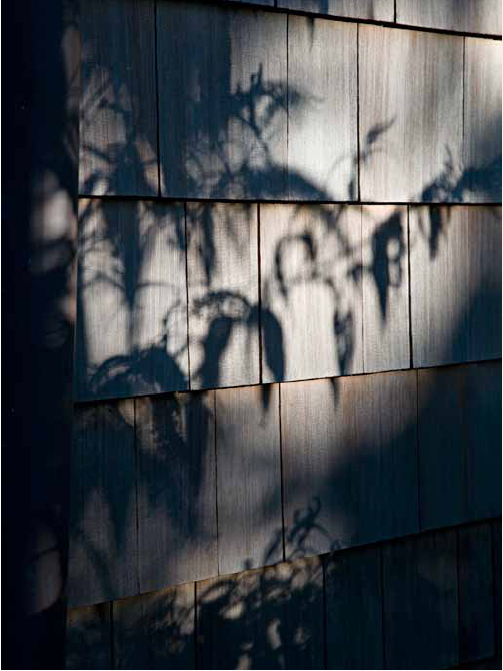FASHION AND PHOTOGRAPHY SHARE certain characteristics. Each claims the status of art, yet remains at its margins. The claims of photography have achieved recognition to some extent, yet photography-as-art constitutes only a small part of all photography. Fashion’s claim to artistic status remains contentious.
There are, of course, differences. Walter Benjamin likened photography to a violin, a musical instrument; the art was in the playing of it, not in the instrument itself. Similarly, Susan Sontag1 suggested that photography was a language, and, like language, it was not an art in itself, but rather the process from which art might emerge. Photography was born as an industrial process, the salient feature of which is the mass reproducibility of the image. Fashionable dress was originally artisanal; however it too has been wholly incorporated into and transformed by mass production. In addition, fashion styles today are disseminated globally by means of the reproducible image, so that quite aside from the characteristics they share, fashion and photography are economically entwined. This economic symbiosis has a further dimension in that both mass fashion and the mass image have aestheticised the world – or at least large parts of the globe – massively contributing to the visual culture in which we now live.
A further similarity between fashion and photography is that in contemporary society both function as potent visual representations of history, of the past. This does not just mean in terms of images in the press and other mass media; the rise of mass photography has meant that amateur photography – the snapshot – has become a major bearer of personal memories, just as images in the mass media become the archives of public memory.
My interest is not in discussing the status of these two forms, fashion and photography, and whether they qualify as art, or not. That debate tends to rely, at least to some extent, on an idea of Art with a capital ‘A’. Art with a capital A disavows vulgar commerce, claiming to be driven by individual genius, when in fact the art market is as much a market as anything else. By contrast, the obvious relationship of both fashion and photography to consumer capitalism is one reason why many commentators and critics have wanted to deny them a place in the Art pantheon. Walter Benjamin quotes from a nineteenth century German newspaper to illustrate the philistinism of the conventional view of art, with its romantic conception of genius – to which we still, rather surprisingly, cling to today. The article from which he quotes is an attack on photography: ‘to try to capture fleeting mirror images … is blasphemous. Man is made in the image of God, and God’s image cannot be captured by any machine of human devising. The utmost the artist may venture, borne on the wings of divine inspiration, is to reproduce man’s God-given features without the help of any machine, in the moment of highest dedication, at the higher bidding of his genius.’2 The intervention of an industrial, mechanical process negated the possibility that an aesthetic product could be ‘Art’.
And in one way or another, for the bourgeois romantic, Art was in some sense sacred. It was difficult to fit fashion into this category; its relationship to the body and its association with novelty and change at a time when Art was held to express the eternal, disqualified it.
The originality of the great theorists of modernity, Baudelaire and Benjamin, lies in part in their challenge to this view of art, and their understanding that modernity changes art. Photography and fashion were for them portals through which they approached this understanding. Baudelaire wrote of finding the eternal in the ephemeral as well as of how modern fashion expresses the beauty of its epoch, but the radicalism of this insight did not succeed in freeing fashion from the taint of mutability. Fashion could never, it was assumed, express a universal truth. It was always a sort of meretricious gloss on modern life and for moralists a kind of lie, concealing the underlying ugliness of consumer capitalism, not to mention the sinfulness of the human body. Thorstein Veblen’s is the best known, and still widely revered, statement of this position. Couturiers, nevertheless, claimed and continued to claim that they are artists, driven by inspiration and genius. Charles Frederick Worth even wore a Rembrandt-style beret to prove that he was such an artist.
By contrast, photography did seem to be the bearer of truth. The camera cannot lie. We now know this is not true. Even before the advent of digital photography and the computer, which bring endless possibilities of altering the raw image, it had been realised that every photograph is taken by an individual who brings his own bias and evaluation to the construction of the image. Nevertheless, photography continues to benefit from the idea that it bears witness, that it is objective. At the same time this supposed documentary objectivity distinguishes it from Art. It is, as it were, visual journalism rather than visual literature.
Photography nevertheless became an important dimension of modernism. Susan Sontag describes the process in this way: ‘Everyday life apotheosised, and the kind of beauty that only the camera reveals – a corner of material reality that the eye doesn’t see… or can’t normally isolate… when ordinary seeing was… violated – and the object isolated from its surroundings, rendering it abstract – new conventions about what was beautiful took hold. What is beautiful became just what the eye can’t (or doesn’t) see: that fracturing, dislocating vision that only the camera supplies.’3 In other words she implies that photography paves the way for abstract art, rather than abstract art being a reaction to the objective realism of the photograph.
It was just this kind of arty photography that Benjamin disliked. He writes: ‘The more far-reaching the crisis of the present social order… the more has the creative – in its deepest essence a sport, by contradiction out of imitation – become a fetish, whose lineaments live only in the fitful illumination of changing fashion. The creative in photography is its capitulation to fashion. The world is beautiful – that is its watchword. Therein is unmasked the posture of a photography that can endow any soup can with cosmic significance but cannot grasp a single one of the human connexions in which it exists.’4 Benjamin – here anticipating Warhol in the most uncanny way – rejects the ideology of Art for Art’s Sake, as would any good Marxist of his time. But the kind of photography that is closest to painting does lose some of the distinctiveness and disavows some of the other possibilities of photography. To think of photographs in some abstract sense as Art also tends to distance both from the realm of the Everyday; when it is as reminders and memorials of the everyday that their hold is so potent.
Fashion, for all its hype, is also quintessentially about the everyday; everyday life. Clothes are what we put on every day; even those who most strenuously insist that what they wear has nothing to do with fashion and that they are not interested in fashion, are nevertheless wearing clothes as directed by fashion in one way or another. Fifty years ago no-one wore jeans to the office or to a party; men (let alone women) did not wear shorts in town. The casualisation of dress, which has made it possible for many individuals to feel that they have opted out of fashion, is in fact a fashion in itself, even were it not that the jeans we wear today are subtly different from those of ten or twenty or fifty years ago; as are t-shirts – and again, fifty years ago no-one wore a vest, that is to say an undergarment, to work.
For Sontag, ‘photographs are a way of imprisoning reality, understood as recalcitrant, inaccessible; of making it stand still.’5 Photographs preserve the past. This insight echoes those of Benjamin and Roland Barthes, the latter in particular insisting obsessively on the mournful nature of photographs which present us with the past without enabling us to re-enter it.
This might seem to separate photography radically from fashion. We choose the clothes we wear every day in order to look right now – today. In that sense fashion is very much about the present. It is about fitting in, while, perhaps, remaining distinctive. It’s to create an impression and to persuade others that this is who we are, this is what we are like. In that sense the everyday practice of fashion has nothing to do with the past or with memory. In fact, the wish is to efface the past, to erase any memory of our having been other than what we are or how we wish to appear today.
Fashion photography is rather different from some other kinds of photography, since it essentially makes images of this eternal present. In the early and mid twentieth century fashion illustration, whether drawing or photography, aimed to be more informational than is the case today. Fashion photography today aims to create an ambience; at least in the upmarket fashion magazines and equally in broadsheet newspapers, there is very little information in that it is often difficult to see exactly what the garment looks like; instead there is a photographic creation of a mood – floaty summer dresses worn by a model whose curled up position set against a woodland scene is purely atmospheric. Fashion photography today is indeed as Carol Tulloch wrote ‘a legitimate if contentious art form’.6 Fashion photographers such as Corinne Day and Juergen Teller or the ‘heroin chic’ spreads of the 1990s have aimed to extend their art beyond the narrow perimeters of the garment itself to address, however superficially, social concerns. Theirs is thus a creative and engaged form. But although Paul Jobling,7 among others, has made a strong case for the importance of this kind of fashion photography, and although it would probably misunderstand the whole enterprise to reject Juergen Teller and others for reducing drug addiction to the glamorous and picturesque, nevertheless, fashion photography offers something very different from and much more self conscious than the presentation of clothes in all those photographs that are not fashion photographs. For one thing, fashion photography creates an enclosed, self-sufficient world encapsulated from the past – and that remains true even when it references the past. Inevitably – proposing as it does the right way to look now – it effaces the past, or at least creates a strange disjuncture from it, or else creates a stylistic pastiche of pastness that bears little relation to any actual past. This is consistent, of course, with the present day-ness of our fashion practice. Photographers such as Teller and Day share the concerns of non fashion photographers such as Nan Goldin – and thus with other art forms – in proposing what was once the new aesthetic of the dark, the deviant, the disturbing, a reaction against the formalist notion of timeless beauty; but unlike Nan Goldin they do not capture and memorialise an actual subculture, they simply reference it.
It seems impossible to discuss photography for long without stumbling upon Surrealism. It has been almost universally held against Surrealism that it proved so compatible with fashion, advertising and consumerism. Surrealist photography has been held in high esteem – Susan Sontag, for example, thought that it was the outstanding achievement of the Surrealist movement, although her assessment of the movement as a whole is much more ambivalent than is that of Benjamin. Nevertheless, the relationship of Surrealism, photography, fashion and advertising is paradoxical. On the one hand Surrealist design, surrealist tropes transformed into clichés, were held to be debased by their association with glamour and the way they enhanced the glamour industries; but on the other hand Surrealist photography was the art of memorialising the objet trouvé, the detritus of modern life, or what Freud termed the refuse of the phenomenal world. But it did not necessarily try to transform its images into abstract art in the way that Edward Weston, for example, did.
Surrealism was also fascinated with the outmoded and outdated, with, as Benjamin put it, ‘the dresses of five years ago’.8 Now the fashions of five years ago represent – or exist in – a fashion or taste limbo. They are what we have just thrown out, the Kristevan Abject, the garments that don’t look quite right, that seem momentarily to have no style, to be aberrant mistakes. Only years later will their style emerge as something distinctive and of its time; although even then that style essence of ‘the Twenties’ or ‘the Eighties’ will represent only very partially what people actually wore in those decades.
In many ways this means that fashion photography could be less interesting than, say, amateur snapshots, photographic images of fashion in everyday life that memorialise the ephemeral. A fleeting moment is captured on a piece of paper or celluloid, or, today, on a chip. To capture the ephemeral, giving it the permanence of an image, is not exactly the same as to find the eternal in the ephemeral. Snapshots, photo-journalism and news pictures capture people wearing clothes in the situations in which they actually wear them, in the street, at home, at parties, in demonstrations or in crowds at sports events – clothes in use, rather than the presentation of an ideal of fashionable dress which is what fashion photography is. Even the contrast between the fashion pages and the gossip spreads at the back of Vogue or similar magazines – and the celebrities on these pages are normally expensively dressed with an eye to being photographed – presents a telling difference between the ideal and the actual.
I may have seemed to contrast the authenticity of the street-scene or family photo with the artificiality of the fashion shoot. And in a sense I have. Fashion photography is utopian and the contrast is rather poignant between it and the reality of clothes as actually worn. Research into dress relies heavily on the investigation of actual garments. Less attention seems to have been paid to the photographic images – moving as well as still – of our visual records of the past.
Benjamin, Sontag and above all Barthes dwell on the melancholy estrangement of the photograph. ‘The most precise technology,’ writes Benjamin, ‘can give its products a magical value, such as a painted picture can never again have for us. No matter how artful the photographer… the beholder feels an irresistible urge to search such a picture for the tiny spark of contingency, of the Here and Now, with which reality has, so to speak, seared the subject, to find the inconspicuous spot where in the immediacy of that long forgotten moment the future subsists so eloquently that we, looking back, may rediscover it.’9
This is not any kind of vulgar (as Sontag would see it) realism. Sontag says that ‘photography’s programme of realism actually implies the belief that reality is hidden… something to be unveiled.’ Photographers aim, she asserts, to ‘catch reality off-guard, in … the “in between moments”.’10 For her this is in fact again formalism, the de-familiarisation or estrangement of formalism reworked.
This is not the kind of realism or reality discussed by Roland Barthes in Camera Lucida.11 This book was written shortly after his mother, to whom he was devoted and with whom he lived, had died. It is an act of mourning and dwells on the impossible search for the lost loved one in the photographs of her that survive. At the same time the theme of the book is more or less that searing or reality, the spark of contingency mentioned by Benjamin. Both writers – Sontag too, for all her doubts about photography – write of the magical quality of photographs. They differ from paintings in that what they show us really was. These persons actually lived; these streets did exist. But they are stuck in the past and we cannot reach them. The photograph can never become Alice’s looking glass, which dissolved so that she could move into the alternative world within or behind the glass. As we stare at a photograph we remain locked out of its reality. ‘What renders a photograph surreal,’ writes Sontag, ‘is its irrefutable pathos as a message from time past.’12
The persons caught on camera are ghosts from the past, testifying to the relentless passage of time. The clothes they wear as they stare out at us form an integral part of the image and of their ghostliness. The past, out-of-date fashions of which they as often as not seem so proud, contribute to the pathos of these figures. In this way fashion and photography are central to a presentation of the past and of transience. It is essentially their fashionable dress, or dress of its time, that now underlines the transience of these lives. Significantly, a common reaction to such images of the past is mockery. How could we have worn those dreadful clothes! How could they, our forebears have put up with these fashions? How ridiculous they are! This is a form of protective disavowal which seals off the sadness we might otherwise experience at seeing our much younger self with long hair and silly sideburns or with enormous 1980s shoulder pads. This suggests that there is a protective aspect to the fashion cycle. And a brief essay by Sigmund Freud tends to confirm this: On Transience, published during the First World War. In this piece Freud describes a walk in the countryside with two companions on a beautiful summer’s day. One of his companions was a young poet – I believe it was actually Rainer Maria Rilke – who recognised but could not rejoice in the beauty all around. ‘He was disturbed,’ Freud tells us, ‘by the thought that all this beauty was fated to extinction, that it would vanish when winter came, like all human beauty and all the beauty and splendour that men have created or may create … [it was] shorn of its worth by the transience which was its doom.’13
Freud suggests that this despondency is one of two possible reactions to the thought of the mortality of all things. The other is rebellion and refusal, which is actually a demand for immortality. Freud rejects the possibility of immortality, yet unexpectedly he also rejects the melancholy that we feel when faced with the reality of transience – the melancholy experienced also by Benjamin and Sontag when contemplation of photographs forces them to recognise it. First, Freud argues that just because something beautiful – or everything beautiful – lasts only a short time, that does not lessen its value; on the contrary, it makes it all the more precious. Secondly, the poet’s despondency is a form of mourning for the lost object of desire. Yet mourning spontaneously comes to an end – at least in most cases, although not in the case of Roland Barthes. The mourning process is purposeful and ultimately it frees us from what is lost.
Could it be, then, that the changes that take place in fashion with its continual and recurring incitement to find beauty in the new, represent a beneficial impulse? Far from signifying a trivial and superficial attitude to life and to the world, could it be that fashion’s cycle testifies to resilience and optimism? This is to skate on thin ice, for one could argue that many, indeed most societies did not have a fashion cycle at all in the sense in which we understand it. But clothing rituals have existed in all societies and per haps one should see modernity’s fashion cycle as the ritual of a dynamic and hectically innovative society in adjusting to the force and pace of change and helping us live with it.
Elizabeth Wilson is an author, researcher and pioneer of fashion academia.
Carlotta Manaigo is a fashion photographer, traversing New York and Europe.
This article was originally published in Vestoj On Material Memories.
Susan Sontag, On Photography, New York: Penguin Books, 1977. ↩
Walter Benjamin, ‘A Smaill History of Photography’, in One Way Street, London: Verso, 1979, p 241. ↩
Sontag, op. cit., p. 90. ↩
Benjamin, op. cit., p.255. ↩
Sontag, op. cit, p 16. ↩
Carol Tulloch, ‘Letter from the Editor’, Fashion Theory, Volume 6, Issue 1, Special Issue on Fashion and Photography, March 2002, p 1. ↩
Paul Jobling, ‘On the Turn – Milennial Bodies and the Meaning of Time in Andrea Giacobbe’s Fashion Photography’, in Fashion Theory, op. c.it., pp 3-24. ↩
Walter Benjamin, ‘Surrealism’, in One Way Street, London: Verso, 1979, p. 29. ↩
Benjamin, op. cit., p 243. ↩
Sontag, op. cit., p 111. ↩
Roland Barthes, Camera Lucida, London: Vintage, 1993, trans., Richard Howard. ↩
Sontag, op.cit., p 54. ↩
Sigmund Freud, ‘On Transience’, in Sigmund Freud, Volume 14, Art and Literature, Harmondsworth, Mddx: Penguin Books, pp 287. ↩
